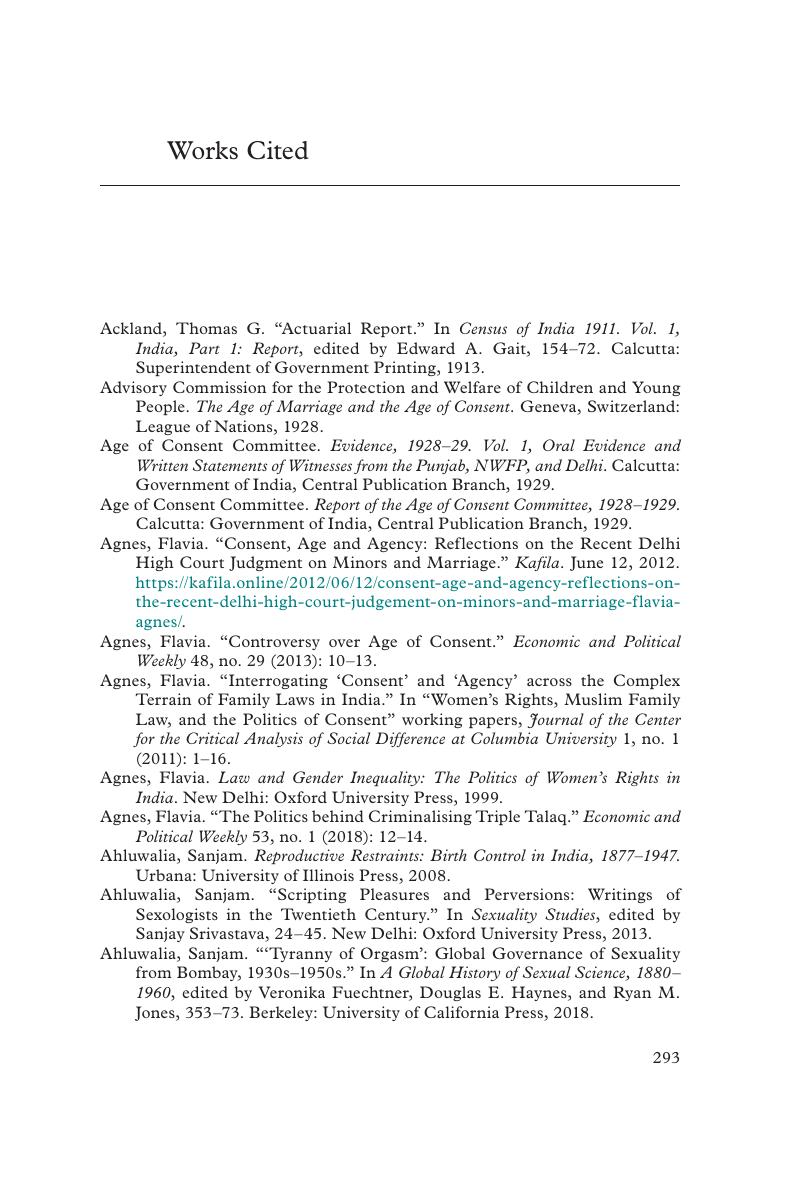Works Cited
Published online by Cambridge University Press: 13 July 2020
Summary

- Type
- Chapter
- Information
- Sex, Law, and the Politics of AgeChild Marriage in India, 1891–1937, pp. 293 - 310Publisher: Cambridge University PressPrint publication year: 2020

